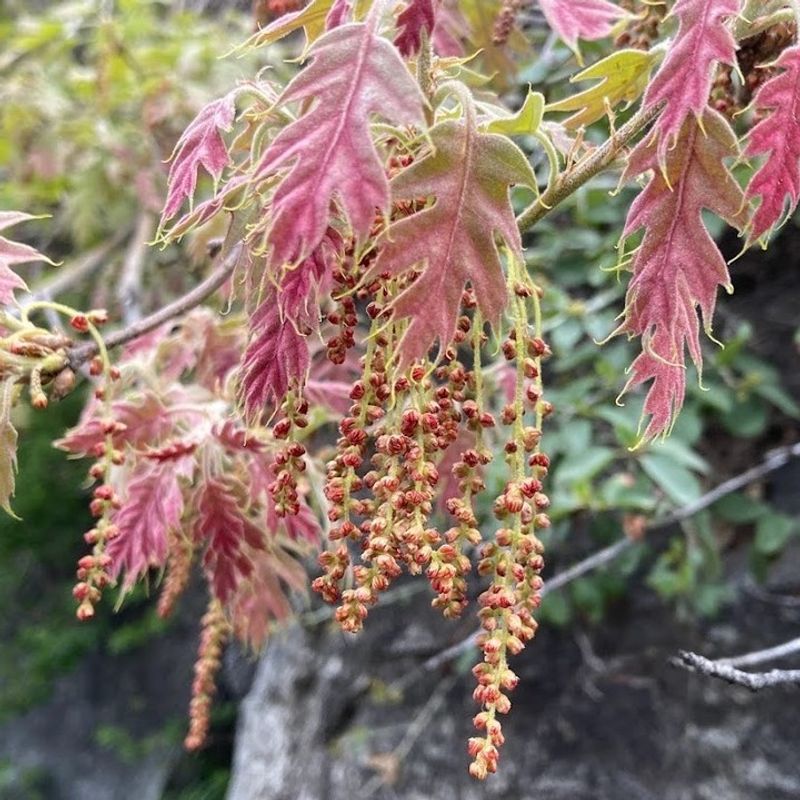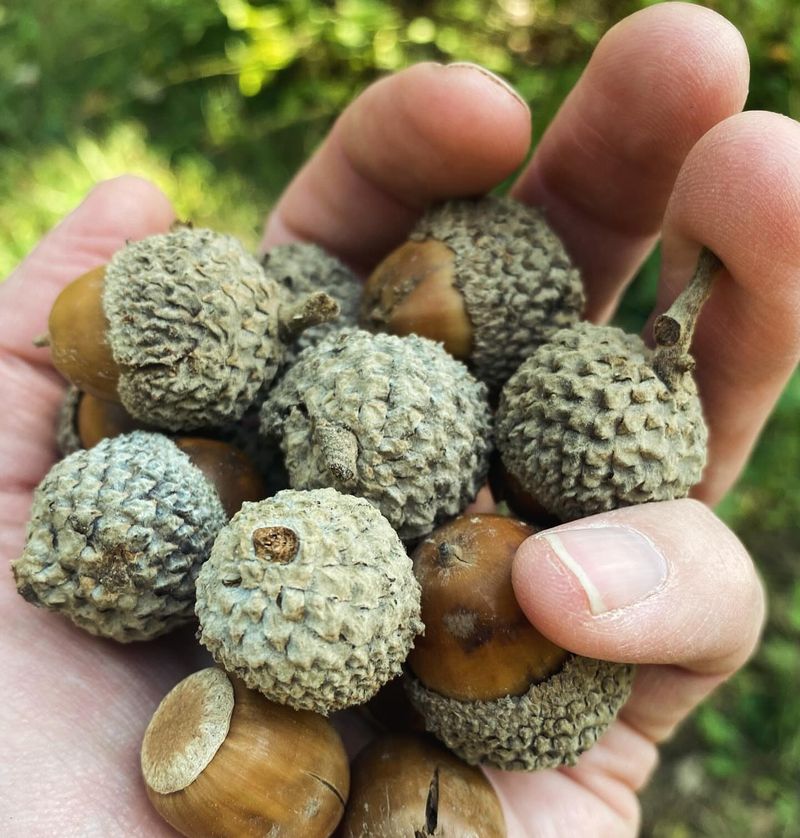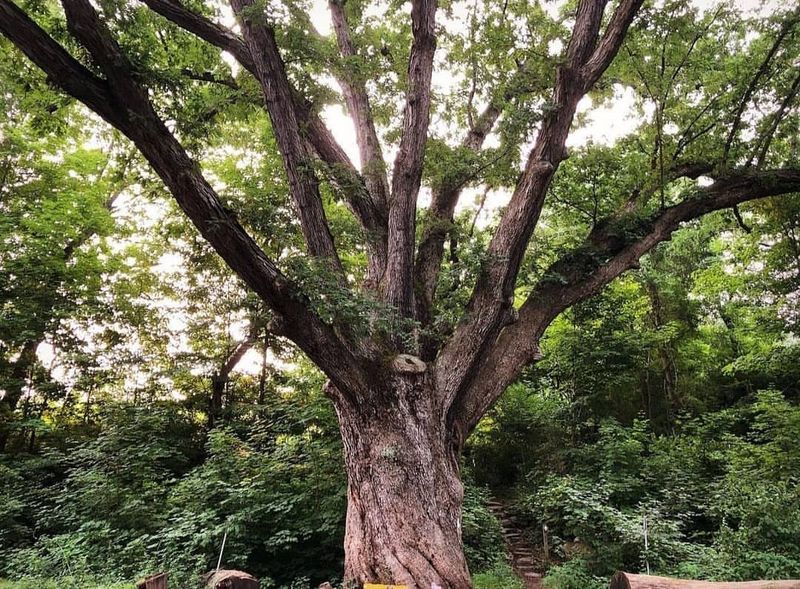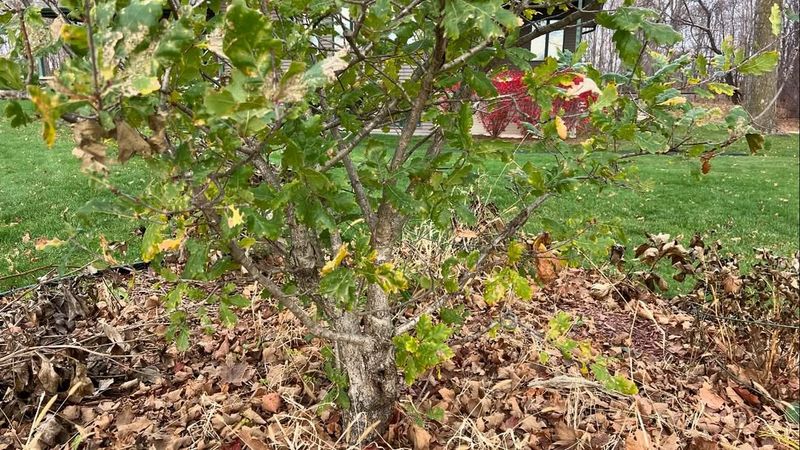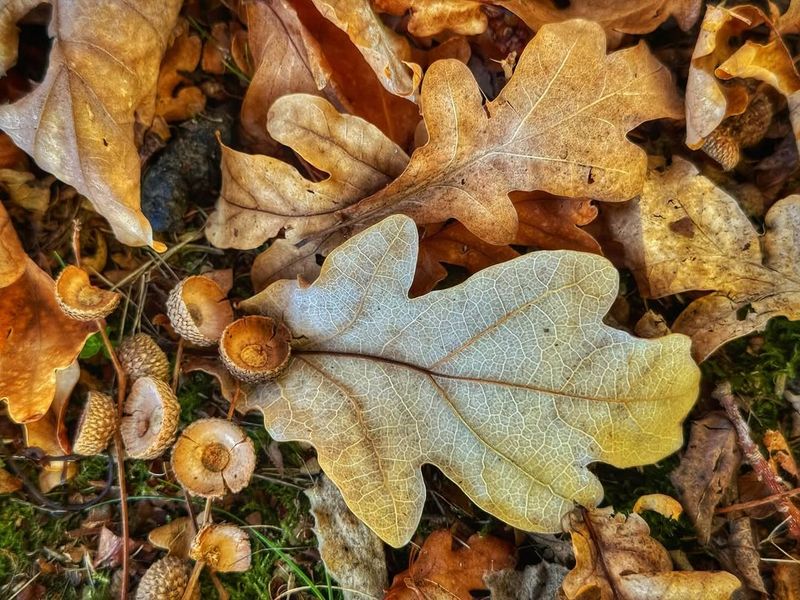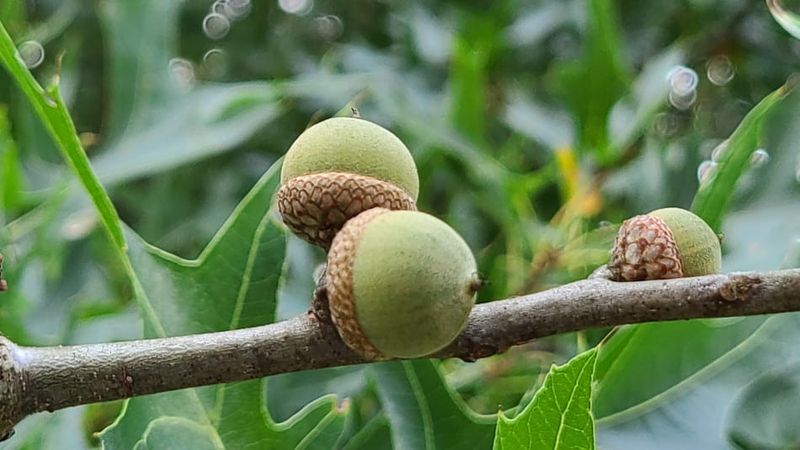Acorns are piling up across New Jersey, and it’s not just a seasonal fluke. Oaks respond to weather shifts, stress cycles, and survival patterns that sometimes trigger a heavy seed drop—a mast year.
When that happens, yards and forest floors end up covered. That’s the reason oak trees are producing so many acorns this year.
1. Perfect Weather Conditions Last Spring
Spring weather plays a huge role in acorn production. Last year’s mild temperatures and steady rainfall created ideal conditions for oak trees to pollinate successfully.
When flowers on oak trees get just the right amount of moisture and warmth, they produce more acorns. New Jersey experienced these perfect conditions, which set the stage for this year’s bumper crop that has everyone talking about the abundance.
2. Mast Year Phenomenon
Oak trees naturally go through cycles called mast years, where they produce enormous amounts of acorns all at once. Scientists believe trees coordinate this effort to overwhelm animals that eat their seeds, ensuring some acorns survive to become new trees.
New Jersey’s oaks are experiencing a mast year right now. During regular years, squirrels and deer eat most acorns, but during mast years, there’s simply too many for wildlife to consume them all.
3. Reduced Late Frost Damage
Late spring frosts can destroy developing acorns before they even have a chance to grow. Fortunately, New Jersey avoided damaging late frosts this past spring, allowing the developing acorns to mature without interruption.
When frost hits during the critical pollination period, it kills the tiny flowers that would become acorns. Without that threat this year, oak trees could focus their energy on producing record numbers of acorns that now blanket yards and forests.
4. Abundant Sunshine During Summer
Plenty of sunshine helps oak trees photosynthesize and store energy needed for acorn production. New Jersey enjoyed a particularly sunny summer, giving trees the fuel they needed to produce massive quantities of acorns.
Trees convert sunlight into sugars that power acorn development. More sun means more energy available for growing acorns. Combined with adequate rainfall, the sunny conditions created a powerhouse season for oak trees throughout the state to maximize their reproductive efforts.
5. Healthy Soil Moisture Levels
Soil moisture directly impacts how many acorns an oak tree can produce. New Jersey received consistent rainfall throughout the growing season, keeping soil moisture at optimal levels without flooding or drought stress.
When roots have access to steady water supplies, trees can dedicate resources to reproduction rather than survival. The balanced moisture conditions meant oak trees weren’t struggling, so they channeled their energy into creating the impressive acorn harvest residents are witnessing today.
6. Lower Pest And Disease Pressure
Insects and diseases can reduce acorn production by weakening trees or directly damaging developing nuts. This year, New Jersey oak trees experienced relatively low levels of pest infestations and disease outbreaks, allowing them to thrive.
Healthy trees produce more acorns than stressed ones. With fewer threats from gypsy moths, oak wilt, and other common problems, trees could invest maximum energy into reproduction, resulting in the exceptional acorn crop homeowners are finding everywhere.
7. Tree Maturity And Age Factors
Many oak trees in New Jersey neighborhoods and forests have reached prime acorn-producing age. Oaks typically produce the most acorns when they’re between 50 and 80 years old, and many local trees fall into this sweet spot.
Younger trees focus energy on growth rather than reproduction, while very old trees slow down production. New Jersey’s mature oak population is now at peak performance, contributing to the overwhelming number of acorns dropping across the state this season.
8. Climate Patterns And Temperature Trends
Long-term climate patterns influence acorn production cycles. Warmer winters followed by stable growing seasons can trigger increased reproduction in oak trees as they respond to environmental signals.
New Jersey’s recent climate trends have created favorable conditions for oak reproduction. Trees sense these patterns and adjust their reproductive strategies accordingly. The combination of mild winters and consistent growing conditions told oak trees that conditions were right for investing heavily in the next generation of oaks.


